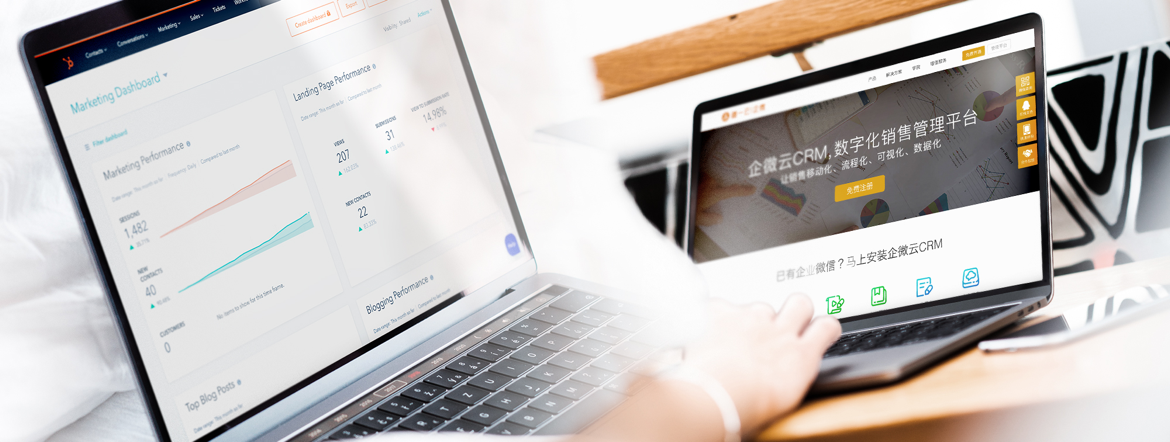For our second blog in the CRM Strategy series we took a look at a problem that is endemic to large international teams – especially in environments where high-context (think China or Japan) and low-context cultures (think Germany or the Netherlands) are required to collaborate and use the same CRM environment.
Typically, there is a clash, especially when low-context, proactive work environments (with a lot of process and rigid CRM structure), try to impose their way of working on high-context environments. In some cases like China, there are an additional layers of difference where its mobile-first, has an entirely different technology stack and completely censored ‘internet’.
CRM Case Study B: Global Solution to Local Problems?
Company B, a large B2B services company, headquartered in Europe with offices globally, had been using CRM C successfully for several years. Company B had a sophisticated system for managing different sales pipelines and types of deals with a repeatable sales process, defined deal stages (with contact and company properties they needed to capture at each deal stage), email communications records, meeting records, call records, in addition to advanced, real-time reporting in CRM C.
Company B recently opened an office in Mainland China with a few marketing staff and outsourced sales team. Company B rolled out CRM C and applied the same sales pipelines, deal stages, contact properties, company properties, email templates, and sales sequences to the Mainland China office.
To Company B’s surprise, the China team barely used CRM C, preferring instead to send Excel reports at the end of the month. Data entry was so infrequent that it became almost impossible to understand how well sales and marketing had been performing.
The result? A lack of visibility on actual sales processes or communications for the global headquarters. Locally, there was a lot of frustration about being forced to use a system that 1. wasn’t in Chinese (as far as they knew) and 2. focused strongly around email communications which were seldom used.
With frustrations from both the global headquarters and local sales team, sales performance was below expectations, with a lot of data and deals ‘missing’ until they came up in accounting months later.
In Case Study B, the situation could have been prevented by simply considering how sales teams proposed to sell locally. It would have become apparent that Chinese sales teams relied a lot on relationships, WeChat messages, and outbound cold phone calls – and that they weren’t at all familiar with English – the CRM language.
Expecting the local team to follow the same processes when the local environment was so different was highly likely to end disappointingly. This is not to say that the local team wouldn’t benefit from a more systematic approach, but that the global team should have listened to and consulted the local team first. Together they could have come up with a unified strategy and architecture that would have taken the best of both worlds.

China-friendly CRM selection in Hong Kong
Hong Kong, by its very nature, is a mix of both Western and Chinese language and business practices. CRM Managers with offices in Hong Kong and Mainland China (that is selling to companies in both regions), face a technological balancing act due to China’s firewall, a mix of different languages – Cantonese, Mandarin and English, and China’s closed-platform technologies – Tencent, Alibaba, Baidu & Sogou.
As a result, the CRM manager needs to balance the need for a structured CRM offering closed-loop reporting, a relatively structured deal pipeline, deal stages, task management and activity tracking (calls, meetings, and emails) for Hong Kong, with the knowledge that the sales team in China is going to struggle to use such a structured tool effectively – it simply doesn’t align with their standard workflow of reactively chatting on WeChat and doing pretty much everything on their phones.
So, what can be done?
Our blog on integrating your CRM with WeChat has some handy tips on how you can use an additional layer to WeChat like Jing, and link it to popular CRMs such as HubSpot, Dynamics or Salesforce.
5 International CRM rollout tips
- Map your sales, services & marketing teams roles, responsibilities and KPIs.
- Perform a simple audit by benchmarking and mapping your existing “best practice” sales processes for each team regionally.
- Interview and listen to each of your local sales teams – in addition to them benefiting from the systematisation provided by a successful global CRM strategy, you must listen to them carefully to understand how they work and what works in their region.
- Ensure the CRM technology works in the local teams' preferred language – this can be a major workflow barrier if it doesn’t.
- Perform a technical analysis of the tools that local sales teams use – are they different from your other regions? Do they, for example, rely more on mobile and instant messaging? If they do, how do you propose to capture that information without hampering their workflow?
Lesson 1 of 3: Consider all key stakeholders
when defining your global CRM strategy
Lesson 3 of 3: CRM training always comes
after CRM strategy & architecture
Unsure how to best localise your Global CRM Strategy? Speak with a local marketing automation specialist to learn more about your options.
 UAE/GCC
UAE/GCC International
International










